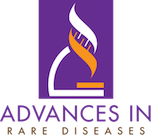
Advances in Rare Diseases
Open Access
ISSN: 2385-5290

ISSN: 2385-5290
Commentary: Anatomy & Physiology: Current Research
Case Reports: Annals and Essences of Dentistry
Research Article: Journal of Yoga & Physical Therapy
Scientific Tracks Abstracts: Reproductive System & Sexual Disorders: Current Research
Scientific Tracks Abstracts: Medical & Surgical Urology